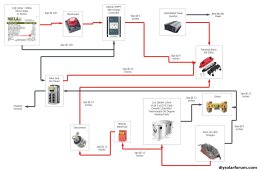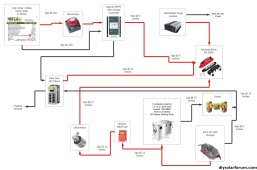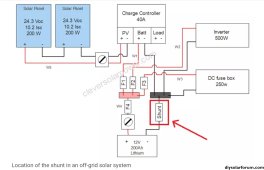bass-o-matic
New Member
I have a small Self Built RV and I'm upgrading it to LiPo4. See any glaring mistakes in my schematic?
1. I'll probably end up with a Negative/Ground Terminal Block just like the Positive one based on the gauge of the wires.
2. I'm wondering if my 30Amp EG4 Charger is big enough?
Thanks for any input.

1. I'll probably end up with a Negative/Ground Terminal Block just like the Positive one based on the gauge of the wires.
2. I'm wondering if my 30Amp EG4 Charger is big enough?
Thanks for any input.





